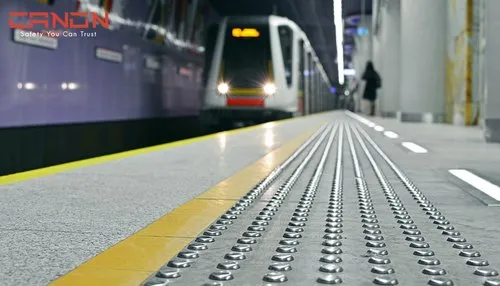
In today’s modern infrastructure, accessibility and safety have become key elements of public design. Among the most vital components that support inclusive environments are tactile ground surface indicators (TGSIs), specifically stainless steel tactile strips and studs. These indicators serve as a critical communication tool for visually impaired individuals, allowing them to navigate public and private spaces with increased confidence and safety.
We’ll explore what stainless steel tactile strips and studs are, where they’re used, their key benefits, and why stainless steel is the preferred material for these essential safety features.
Understanding Tactile Strips and Studs
Tactile strips and studs are raised surfaces installed on walking paths to convey directional or hazard-related information to the visually impaired through touch or feel. These indicators are typically found in places where navigation cues are essential, such as:
- Staircases
- Ramps
- Pedestrian crossings
- Railway platforms
- Elevators
- Public buildings and transport hubs
There are two primary types:
Tactile Studs (also known as tactile dots or tactile buttons): Installed in a grid pattern, these are typically used as a warning indicator to alert users of hazards ahead such as a staircase, road crossing, or sudden drop.
Tactile Strips (also known as tactile bars or lines): Installed in parallel lines, these serve as guidance indicators, leading individuals along a safe and accessible route.
Why Use Stainless Steel?
While tactile indicators can be made from various materials like rubber, PVC, or concrete, stainless steel stands out for several reasons:
✅ Durability
Stainless steel is corrosion-resistant, weather-resistant, and long-lasting, making it ideal for both indoor and outdoor use.
✅ Slip Resistance
Many stainless steel tactile strips and studs feature anti-slip patterns, increasing grip and safety in wet or high-traffic areas.
✅ Modern Aesthetic
With its sleek, polished look, stainless steel offers a premium, clean finish that complements modern architecture and urban environments.
✅ Low Maintenance
Compared to other materials, stainless steel requires minimal maintenance while retaining its function and appearance over time.
✅ Compliance with Accessibility Standards
Stainless steel tactile indicators meet international safety and accessibility standards such as ISO 23599 and often comply with national building codes for disabled access.
Applications of Stainless Steel Tactile Indicators
- Stainless steel tactile strips and studs are used across various sectors to promote safety and navigation:
- Public Infrastructure: Footpaths, metro stations, railway platforms
- Commercial Buildings: Shopping malls, hotels, and corporate offices
- Healthcare Facilities: Hospitals, clinics, and care homes
- Educational Institutions: Schools, colleges, and universities
- Transport Terminals: Airports, bus stations, and ferry terminals
Installation & Layout Tips
- Proper installation is essential to ensure tactile indicators provide the correct guidance:
- Install warning studs before stairs, ramps, or crossings.
- Install directional strips in continuous paths leading to exits, elevators, or service counters.
- Use contrasting colors or finishes for better visual cues for those with partial sight.
- Ensure alignment and spacing adhere to local accessibility codes.
Conclusion
Stainless steel tactile strips and studs are more than just building accessories — they are essential tools for creating safe, inclusive, and accessible environments. Their durability, aesthetic appeal, and compliance with safety standards make them the preferred choice in urban design and infrastructure development.
Whether you’re a builder, architect, or facility manager, investing in high-quality stainless steel tactile indicators ensures your space is accessible for all. Brands like Prosafe Living offer reliable solutions that combine safety, compliance, and modern design.









